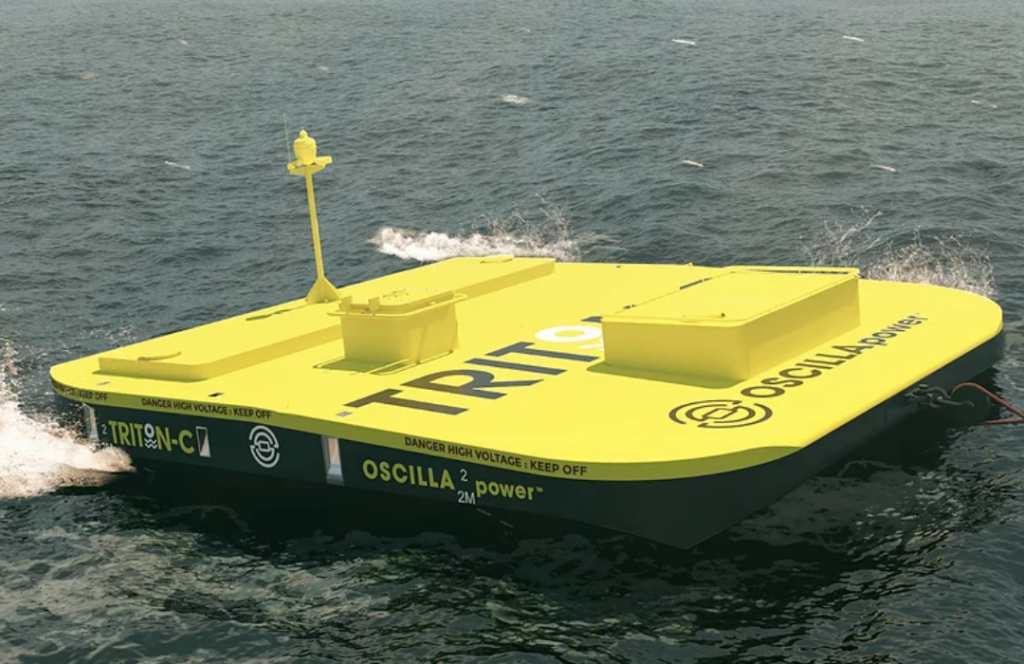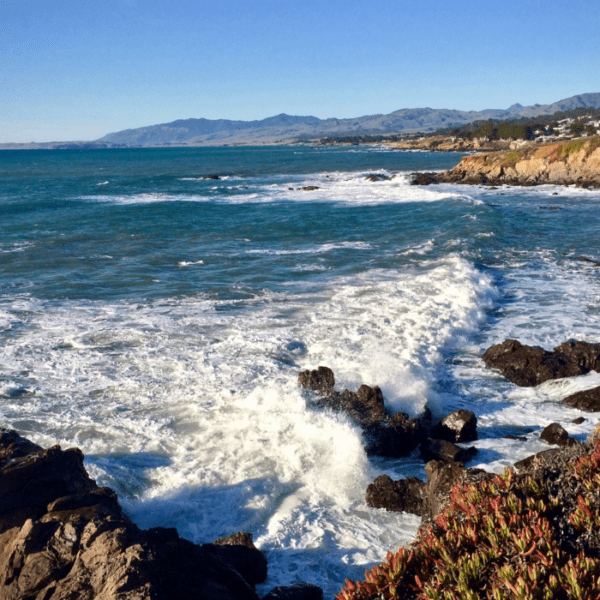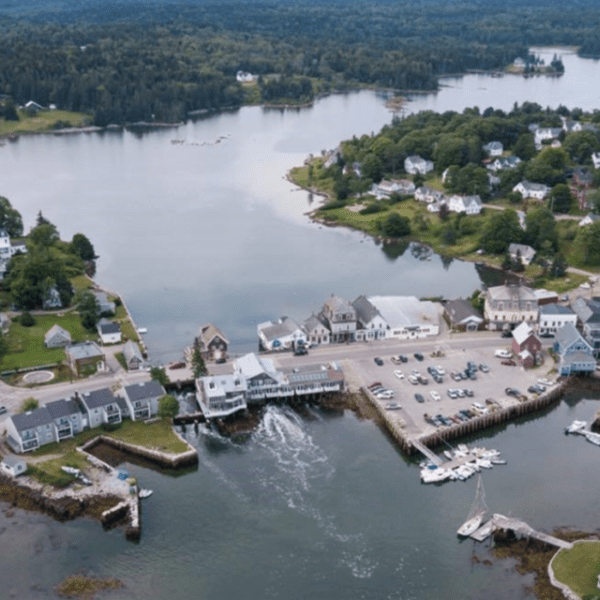The National Hydropower Association (NHA) recently sat down with four executives of U.S.-based marine energy technology development companies to discuss their views on how to accelerate deployment and commercialization of wave and tidal devices in the United States.
The discussion is timely, as later this week – April 28-30, 2021 – more than 400 stakeholders, experts, and exhibitors from throughout the world will gather virtually to discuss device innovation, new market developments and regulatory frameworks to spur commercialization of marine energy during the International Conference on Ocean Energy (ICOE). The ICOE event is being hosted by the United States for the first time. NHA’s Marine Energy Council, in cooperation with the U.S. Department of Energy and Ocean Energy Systems (OES), is organizing the three-day virtual event. OES is an intergovernmental technology collaboration program involving the 29 member countries of the International Energy Agency.
The four executives we interviewed acknowledge the importance of coming together to share and learn from one another, as the marine energy industry moves to full-scale commercialization. However, they also agree this information exchange is not enough.
They say actions are needed at the federal policy level to increase financial support for research and development, reduce market barriers, and create financial incentives for technology development.
The executives providing insight are:

Reenst Lesemann, CEO, C-Power, and co-chair of NHA’s Marine Energy Council
Technology developer C-Power will be demonstrating its SeaRAY autonomous offshore power system (AOPS) at the U.S. Navy’s Wave Energy Test Site in Hawaii in the summer of 2021. AOPS is an integrated offshore power generation, energy storage, data server, and communications system for support of resident, unmanned mobile and static assets. It provides energy and bidirectional data transfer, which are essential for customers seeking to reduce costs and carbon, improve safety and unlock a wave of innovative capabilities for resident vehicles, sensor packages, operating equipment and vessel charging.

Stuart Davies, CEO, ORPC, Inc.
In Igiugig, Alaska, technology developer ORPC Inc. has demonstrated its 40-kW RivGen® Power System in the Kvichak River. It operated throughout 2020 and proved its ability to survive the harsh Alaskan winters. A second RivGen® Power System is being prepared for deployment at Igiugig for the summer of 2021. Once both systems are fully integrated with the pairing of a smart microgrid controller and a battery storage system, the community’s reliance on diesel will be decreased by up to 90 percent.
ORPC is exhibiting at the International Conference on Ocean Energy (ICOE).

Balakrishnan (Balky) Nair, CEO, Oscilla Power
Oscilla Power’s TRITON WEC™ will be deployed in Hawaii at the Navy’s Wave Energy Testing Site in 2021. Triton is a multi-mode point absorber that consists of a geometrically optimized surface float connected to a ring-shaped, vertically asymmetric heave plate by three taut, flexible tendons. Triton’s surface float can extract energy from ocean waves in all six degrees of freedom (heave, pitch, surge, roll, and yaw), allowing for energy capture across a wider range of ocean conditions.
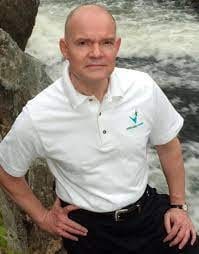
Trey Taylor, Co-Founder & Chief Commercial Officer, Verdant Power
In October 2020, Verdant Power deployed three of its fifth-generation turbines mounted on a single TriFrame™ as part of its Roosevelt Island Tidal Energy (RITE) Project in New York City’s East River – a tidal strait. To date, this one-half scale demonstration project has exceeded expectations and generated 170 MWh in the first 150 days of continuous operation, a record for marine energy production in the United States. Most importantly, the turbines performed at over 99% availability and overall water-to-wire efficiencies reached to over 46%.
QUESTION 1
NHA: As you all know, NHA’s Marine Energy Council earlier in April 2021 released a Commercialization Strategy for Marine Energy. The strategy essentially serves as a roadmap for how to advance the marine energy industry from “emerging” to “significant contributor.” The strategy lays out domestic marine energy deployment targets of at least 50 MW by 2025, 500 MW by 2030, and 1 GW by 2035. The strategy also calls on the U.S. federal government to take actions to help the industry achieve these deployment targets. Why is such a strategy so important?
Trey Taylor, Verdant Power: With the climate crises in mind, all renewable energy and distributed energy resources are going to be needed to reduce emissions and uphold commitments made by signatories under the Paris Accord.
Marine energy is the “new” renewable energy. There is more than 250 GW of potential global marine energy that is technically feasible for harvesting that energy. And, for every GW of marine energy produced, 1,000 full-time jobs are created, 6.7 million tons of coal are offset, and 5.7 million tons of CO2 are eliminated a year.
The new commercialization strategy outlines a plan for America to compete around the world with its marine energy technologies and services that are exported from the U.S.
Balakrishnan (Balky) Nair, Oscilla Power: Marine energy, while it has many intrinsic benefits, will likely need some support at the early stages to gain initial traction as it is behind from a timing standpoint relative to solar and wind, and as such, has to contend with the extremely low price points that solar and wind have already reached.
If the type of assistance outlined in the new commercialization strategy can be provided at the federal level that permits a certain stage of marine energy technology deployment without competing purely on price point, not only can those benefits be realized, but the price of marine energy technologies can be driven down to be sufficiently competitive with other renewable options.
Stuart Davies, ORPC, Inc.: I completely agree with Trey and Balky, and see a strategy’s necessity from three different angles.
First, Trey touched on CO2 reduction — commercialization of marine energy will help the U.S. to meet our carbon emission reduction targets by 2030. Even the CEOs of the leading wind and solar companies forecast that wind and solar will make up less than 50% of all electricity generated in the U.S. by 2030 … and that assumes an 80-fold increase in battery storage. The United States, and the world, need a baseload resource that is highly predictable that can be paired with intermittent resources like wind and solar to truly transform our electric grid. That resource is marine energy.
Second, I also agree with Trey on job creation. This would be job creation within the technology itself, but there’s a larger opportunity here that we lost with wind and solar. If you look at where solar panels and wind turbines and their related components are made, a very low percentage of the manufactured content is made in the United States. The U.S. will not recover these jobs.
The marine energy industry is projected to grow into a global industry with $50 billion in annual revenue by 2050, which is the size of the US Light Truck Market. Think about the job potential of an industry of that size! This presents the opportunity to create thousands of high-paying jobs in areas of the country that really need them – including the industrial Midwest and coastal communities.
Europe and Canada recognize this opportunity and are making a big push with government grants and funding programs aimed at attracting the leading global marine energy players to set up manufacturing in their countries and create the highly skilled and high-paying manufacturing and technology jobs of the future.
The U.S. has the opportunity to dominate this industry by accelerating deployments of these devices now by leading U.S. players. This, in turn, will enable U.S. companies to set up manufacturing supply chains within this country. Not only will this create great jobs in the U.S., but it will also open a huge market for value-add exports, helping the country’s balance of payments.
Finally, I’d like to add the opportunity for energy equity and equality. Remote communities, especially in Alaska, and rural communities across the country pay significantly higher electricity rates than their urban counterparts. In addition, the true cost of this electricity is high due to the expensive transmission and distribution infrastructure that is required to be built and maintained to provide electricity to many of these communities.
This high cost of electricity greatly hurts economic growth as it makes it more expensive for industries to locate in these communities and so job creation is slow and younger workers move from these communities, adding further crowding and complexity to large American cities.
With the development of the microgrid, the U.S. has the opportunity to provide a more equitable energy future for these communities and put them back in control of their economies where they can attract industries of the future and create jobs.
Reenst Lesemann, C-Power: I completely agree that the U.S. can be the global leader within this sector. This is an economic development opportunity for our nation. It’s a jobs story, all the while bringing us closer to our net-zero carbon goals.
I’d also like to add one other component – marine energy applications that fit within the U.S. Department of Energy’s “Powering the Blue Economy” initiative. There is customer demand today for replacing carbon-based fuels for offshore operations with marine energy. The opportunity here is enormous and goes well beyond grid-connected wholesale power markets, by providing always available energy and real-time data for offshore energy, defense, security, and oceanographic research applications. You can think about it as the internet of ocean things. There are terrestrial needs within this market segment as well, including power for remote grids and desalination plants to name a couple. And these applications are precursors to wholesale power applications for marine energy.
Here’s a real-life example: today, subsea drones need a topside vessel to operate, and that vessel can easily cost more than $100,000 per day and produce about 7000 cars worth of CO2 over a year’s time. Autonomous offshore power systems, powered by marine energy, can provide energy and data for those same drones and significantly reduce both the operational cost and carbon footprint by removing the need for the topside vessel. Just as autonomy, digitization, and electrification have become commonplace on land, marine energy is the missing piece of the puzzle for enabling these kinds of innovations in the ocean economy.
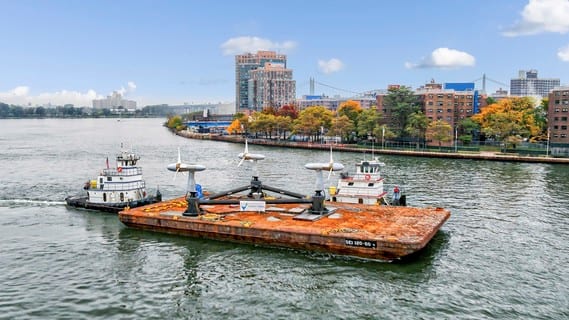
QUESTION 2
NHA: What do you see as the biggest use of this new commercialization strategy document?
Balky Nair: I’m excited for our company and the industry at large to use this document as a tool for educating decision makers at the federal and state levels about the potential benefits of marine energy. It also very well communicates what specific help developers need to advance into state-of-the-art technologies and make commercially viable marine energy a reality.
Stuart Davies: I agree with Balky. It’s a vital tool in our efforts to educate policymakers about marine renewable energy. There is too much focus on wind, solar and battery storage. These technologies are fantastic, but they will not get the U.S. to a fully renewable solution on their own. The world needs a renewable energy resource that can provide highly predictable baseload electricity.
Policymakers need to understand the magnitude of the potential resource available in marine renewable energy. They also need to be shown the role they can play to help companies develop commercial devices so that the U.S. can develop the potential resource.
Reenst Lesemann: The potential for development of marine energy resources is great. Just to put into perspective, the new report, Marine Energy in the United States: An Overview of Opportunities, released by the U.S. Department of Energy and the National Renewable Energy Laboratory (NREL), found that utilizing just one tenth of the resource potential within the 50 states would equate to more than three times the U.S. solar generation in 2019.
The first step to develop this huge potential is to accelerate commercialization. As an industry, we have set some deployment targets (50 MW by 2025, 500 MW by 2030, and 1 GW by 2035) that I think are very achievable … as long as the recommended actions called for in the NHA Marine Energy Council’s Commercialization Strategy are implemented by the federal government. Policy makers now have a unique opportunity … they can set marine energy on a similar trajectory as that of wind and solar.
Trey Taylor: I also see the strategy document as a platform the U.S. marine energy industry can use to propel its efforts beyond this country. Federal funding for activities, such as reverse trade missions, would go a long way in showcasing U.S. marine energy projects, which are readily scalable to meet other countries’ renewable energy needs.
QUESTION 3
NHA: Why is federal support and funding needed?
Stuart Davies: If you look at the 20-year history of the wind and solar industries, the first 10 years can be characterized as researchers and small companies trying all sorts of new innovations to figure out what worked and what didn’t. Costs for producing a kilowatt-hour of electricity were extremely high. Toward the end of the first 10 years, companies started to figure out the technology, supply chains began to form, and those suppliers began innovating components.
The next 10 years have seen an ever-accelerating virtuous cycle in these two industries where supply chain partners drive innovation and cost reductions. The reduced costs and increased confidence in the technology makes it more cost competitive. That, in turn, increases demand for the products. Financing sources get increasingly comfortable with financing these lower-cost projects, which then results in a lower cost of financing. This results in supply chain partners see a growing market and drive further innovation and cost reductions.
The federal government can shorten this cycle from 20 years to 10 years for marine energy by financing deployments of technology, and, most importantly, by addressing the permitting requirements to make sure these devices can get deployed quickly.
Environmental and regulatory agencies need to change their approaches if the U.S. wants to meet its climate change objectives. We need agencies to allow devices to get deployed (with a caveat that they will be remove quickly if there is a problem), rather than using old permitting frameworks that can take as long as 10 years to allow small devices to be deployed.
Adopting a policy that would allow less than 1 MW-scale devices to have a streamlined permitting process with heavy monitoring during the first year of operation would greatly accelerate the adoption of marine energy technologies.
Balky Nair: Essentially, federal support and funding helps development of new technologies that can further drive down the levelized cost of electricity. Specifically, support and funding will facilitate the demonstration of these technologies at progressively larger scales, which leads to full-scale build. It also enables early “farm-scale” deployments — say 50 to100 MW scale — with loan guarantees, feed-in tariffs, and other vehicles. This approach would facilitate deployments and manufacturing at sufficient scale to make the economics viable.
Trey Taylor: This is exactly right. According to the Electric Power Research Institute (EPRI), it takes more than ten years for infrastructure technologies to go from working prototypes to commercialized products. Each step of the way is costly for entrepreneurs and start-up companies, especially the final step of getting through “the valley of death” – the pre-revenue step. Government involvement needs to be translated into economic incentives to provide support and funding, such as grants, Feed-in tariffs, and production tax credits.
Reenst Lesemann: The key is to decrease costs and improve performance, reliability, survivability, and a dozen other attributes. This is done through a cycle of innovation – R&D, engineering, lab testing, deployments, incorporating lessons learned, and then repeating that cycle until you get it right. These activities take time and resources. As the saying goes, if it was easy, everyone would be doing it.
Private capital, however, will not solely take on the risk to underwrite this development cycle. Just as you see in the healthcare and other sectors, federal support is critical. It’s needed to provide the necessary resource to fund the innovation cycle and move towards commercialization. The U.S. Department of Energy, through the Water Power Technologies Office, has done an excellent job of this through grants, the SBIR program, and prize competitions. This is incredibly beneficial work by the DOE, but if we are going to achieve domestic goals for economic and environmental impact, more is needed.



